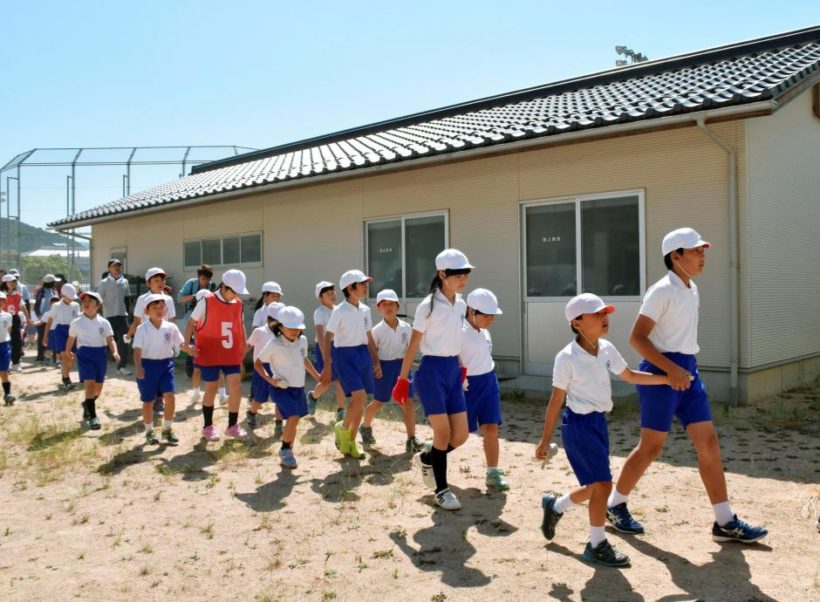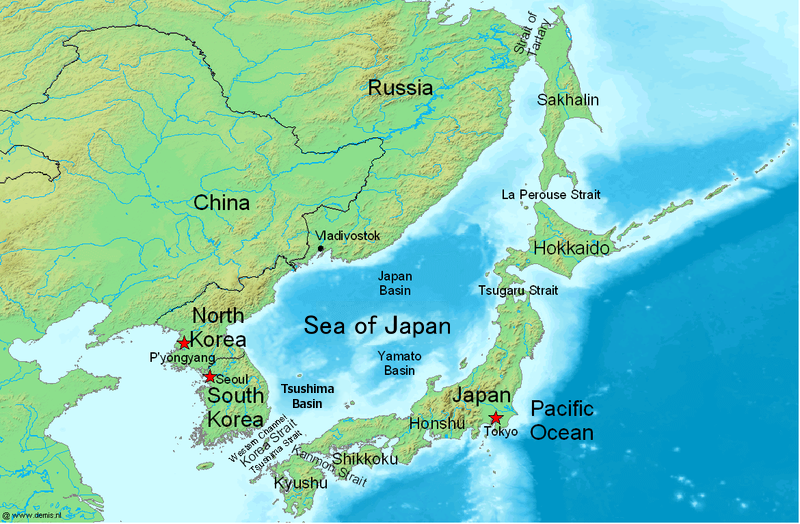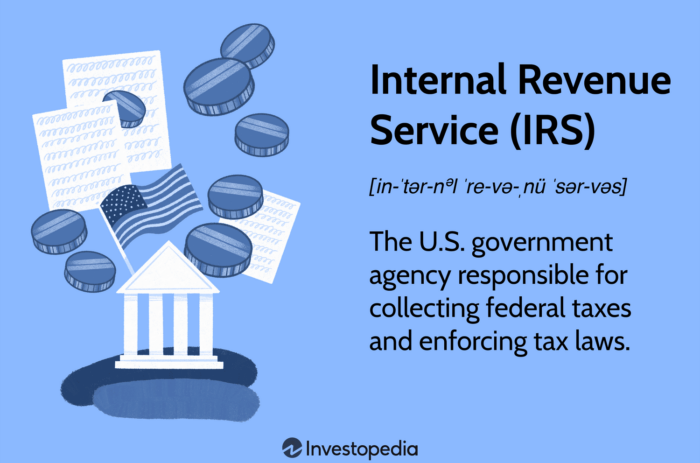
Elementary school students take part in an evacuation drill for a simulated North Korean missile attack, in Abu, Yamaguchi prefecture, Japan in this photo taken by Kyodo June 4, 2017. (Photo: Kyodo/via Reuters)
redo Jump to...
print Print...
(by Julian Ryall, Daily Telegraph, published Dec. 5) – Millions of residents of Tokyo are to take part in evacuation drills simulating a North Korean nuclear attack on the Japanese capital.
The national and city governments are to carry out a series of exercises between January and March to prepare for a potential attack on Tokyo, the Sankei Shimbun newspaper reported, the first time that a major Japanese city will have carried out responses to a simulated attack.
Towns facing the Korean Peninsula have in recent months conducted similar drills, with residents instructed to seek shelter in response to sirens warning of an imminent missile strike.
But the Japanese government has until now resisted calls for major cities to carry out similar exercises on the grounds that they would alarm the public.
Shinzo Abe, the prime minister, has also called in local governments throughout the country to identify underground facilities or buildings that are sufficiently sturdy to withstand a missile attack and to designate those facilities as shelters.
Given North Korea’s worsening relations with surrounding nations and the regime’s advances in nuclear weapons and missile systems, many in Japan believe evacuation exercises for the public are a prudent precaution.
“I believe the threat is very real and that war could break out at any time,” said Ken Kato, a human rights campaigner who lives in Tokyo. Nearly 9.3 million people live in the city, with millions more travelling into the metropolis every day for work.
“I also believe that the average Japanese person does not want to think about the worst-case scenario because it is simply too unpleasant, but we cannot keep our heads in the sand any longer,” he told The Telegraph.
“Evacuation drills are a sensible precaution that would help to minimise casualties, in much the same way as we practice what to do in the event of a major earthquake,” he said.
“And if war did break out, then I think it is unfortunately inevitable that North Korea would target Tokyo,” he added. “The US has a major military base at Yokota, to the west of the city, and its main naval base in the region is at Yokosuka, to the southwest.
“It is hard to believe they would not want to strike those military concentrations,” he said, adding that it is unlikely that the North Korean regime would be particularly concerned about casualties among civilians living nearby.
A study by analysts at the US-Korea Institute at Johns Hopkins University and published on the 38 North web site in October suggested that a 250 kiloton airburst over the centre of Tokyo would cause nearly 698,000 fatalities and injuries to a further 2.47 million people. Those figures would rise significantly if the city was targeted with multiple warheads.
Questions
1. For JAPAN, give the following information:
- capital
- location/the countries that share its borders
- the religious breakdown of the population
- the type of government
- the chief of state (and head of government if different) If monarch or dictator, since what date has he/she ruled? – include name of heir apparent for monarch
- the population
Find the answers at the CIA World FactBook website. For each country, answers can be found under the “Geography” “People” and “Government” headings.
NOTE: Before answering the questions below, read the info under “Background” and watch the videos under “Resources.”
2. For JAPAN:
a) list the who, what, where and when of the news item
b) Japanese towns facing the Korean Peninsula have in recent months conducted similar drills, with residents instructed to seek shelter in response to sirens warning of an imminent missile strike. Why has the Japanese government until now resisted calls for major cities to carry out similar exercises?
c) How many people will be involved in the Tokyo drill? (What is the population of Tokyo + those traveling into Tokyo daily for work)
d) Consider the proximity of Japan to North Korea and the threat posed by that unstable regime. Do you think the Japanese government is unnecessarily frightening its citizens with the drills, or doing its job to protect citizens to the best of its ability? Explain your answer.
Background
From a March 17, 2017 JapanTimes article:
- On March 6, North Korea simultaneously launched four ballistic missiles, three of which landed in Japan’s exclusive economic zone. Tokyo estimated that one of the missiles fell into the Sea of Japan just 200 km off the Ishikawa Prefecture’s Noto Peninsula.
- Amid a growing missile threat from North Korea, the northern city of Oga, Akita Prefecture, held Japan’s first-ever evacuation drill for local residents, gaming out a scenario in which Pyongyang lobs a ballistic missile into the waters nearby.
- The drill came as the North continues to make advances in its missile and nuclear weapons programs, having carried out a number of launches over the past year.
- Conducted on the premise of a ballistic missile falling into Japanese waters off Akita, the drill was aimed at promptly relaying information while facilitating the swift and safe evacuation of residents.
Resources
Watch a September 2017 evacuation drill following a simulated North Korean missile attack in a Japanese town of 3,500 people approximately 475 miles west of Tokyo.
Daily “Answers” emails are provided for Daily News Articles, Tuesday’s World Events and Friday’s News Quiz.




